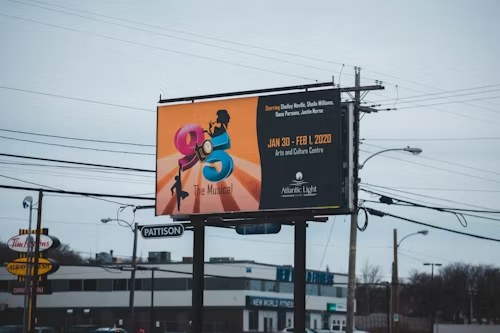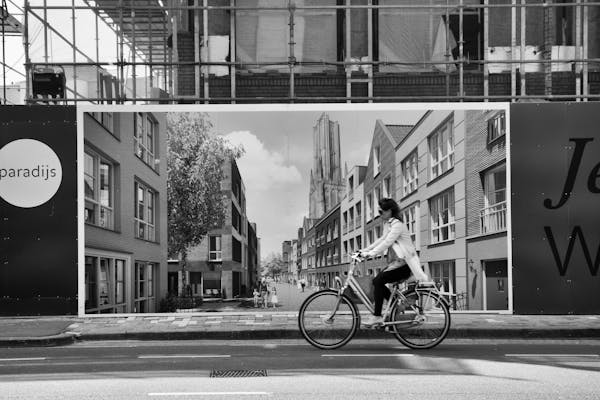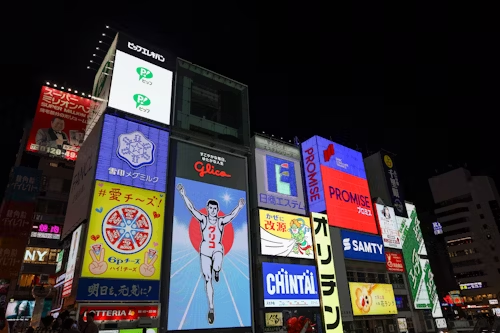Maximizing Reach and Engagement: A Comprehensive Guide to DOOH Advertising and Interactive Billboard Ads

In the dynamic world of digital marketing, staying ahead involves not just understanding the latest trends but effectively applying them. Digital Out-of-Home (DOOH) advertising and interactive billboard ads stand out as transformative approaches that blend innovation with widespread reach. This post explores the evolving landscape of outdoor advertising, focusing on the strategic integration of DOOH advertising, interactive billboards, and the traditional but ever-relevant static billboards.
Understanding DOOH Advertising
DOOH advertising refers to digital media used for marketing to consumers when they are "on the go" in public places, transit areas, or commercial locations. Unlike traditional outdoor advertising, DOOH can dynamically change what is displayed on screens, adjusting content in real-time in response to data inputs and environmental factors. This flexibility allows advertisers to engage more effectively with their target audiences.
- Enhanced Engagement: DOOH allows for creative and interactive content, increasing consumer engagement.
- Real-Time Updates: Advertisers can change the message based on time of day, weather, and other immediate factors.
- Better Targeting: Advanced analytics and connectivity allow for more specific targeting based on audience demographics and behavior patterns.
The Rise of Interactive Billboard Ads
Interactive billboard ads are a subset of DOOH advertising that involve more direct engagement with viewers. These billboards incorporate technology such as touch screens, motion sensors, and augmented reality, offering immersive experiences that not only capture attention but also encourage viewers to interact directly with the ad.
- Increased Memorability: By involving the audience actively, interactive billboards significantly enhance recall rates compared to static ads.
- Direct Engagement: They provide instant interaction, from social media integration to instant purchases or more information about products/services.
- Entertainment Factor: These billboards can turn advertisement viewing into an entertaining experience, increasing the likelihood of sharing and viral potential.
Static Billboards: The Unyielding Pillars of Outdoor Advertising
Despite the surge in digital strategies, static billboards remain a powerful advertising medium. Their constant presence and often strategic placement make them an indispensable tool in brand campaigns, especially for establishing brand presence and frequent reinforcement.
- Cost-Effectiveness: Generally, static billboards are less expensive than their digital counterparts, offering a more accessible advertising option for businesses with smaller budgets.
- Simplicity and Visibility: They provide straightforward, continuous exposure, often in high-traffic areas, ensuring that a brand’s message is consistently visible to a large audience.
- Wide Reach: Static billboards can effectively increase reach, particularly in areas with high vehicular or pedestrian traffic.
Strategies for Effective Outdoor Ad Placement
Whether opting for dynamic DOOH advertising or interactive and static billboards, placement plays a crucial role in maximizing campaign impact. Here are some strategic considerations for effective outdoor ad placement:
- Location Analysis: Choosing locations based on traffic density, target demographic concentration, and visibility can greatly affect the ad's performance.
- Competitive Analysis: Assessing the presence and placement of competitors’ ads can provide insights into effective locations and untapped opportunities.
- Content Relevance: Aligning the content of the ad with the specific characteristics of the location and its audience can enhance relevance and resonance.
Cost-Efficient Billboard Rentals: Maximizing Budget and Impact
Finding cost-efficient billboard rentals is crucial for budget-conscious marketers aiming to make a big impact with limited resources. Here are strategies to secure the most value from billboard rentals:
- Negotiate Long-Term Deals: Longer rental periods can often secure lower rates as vendors prefer the security of long-term bookings.
- Choose Off-Peak Options: Locations or times that are considered off-peak can offer lower prices, potentially allowing access to premium spots that would be unaffordable during peak times.
- Bundle Deals: Some vendors offer discounts when you book multiple locations or combine different types of billboards, such as static and digital.
In conclusion, the integration of DOOH advertising, interactive billboard ads, and static billboards offers a diverse toolkit for marketers aiming to capture attention in a saturated media landscape. By understanding each type's strengths and strategically selecting placement and cost-effective rental options, businesses can create impactful, memorable advertising campaigns that engage and inspire audiences effectively.
As technology continues to evolve and more data becomes available, the capabilities and effectiveness of outdoor advertising are only expected to grow, providing even more exciting opportunities for innovative marketing strategies.




